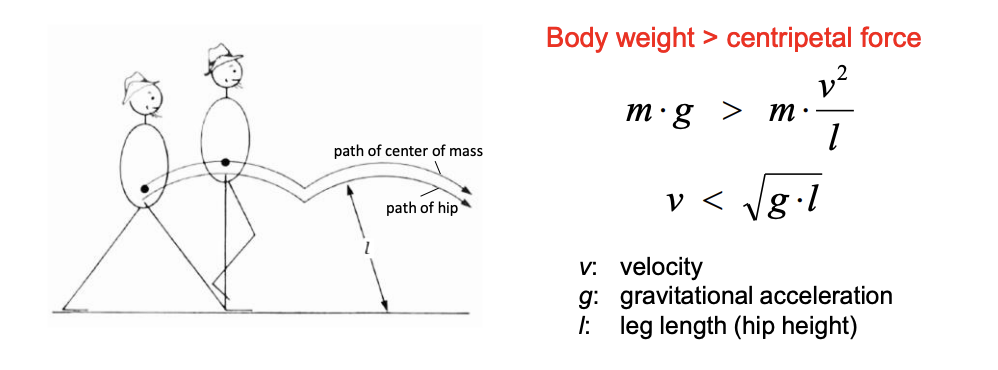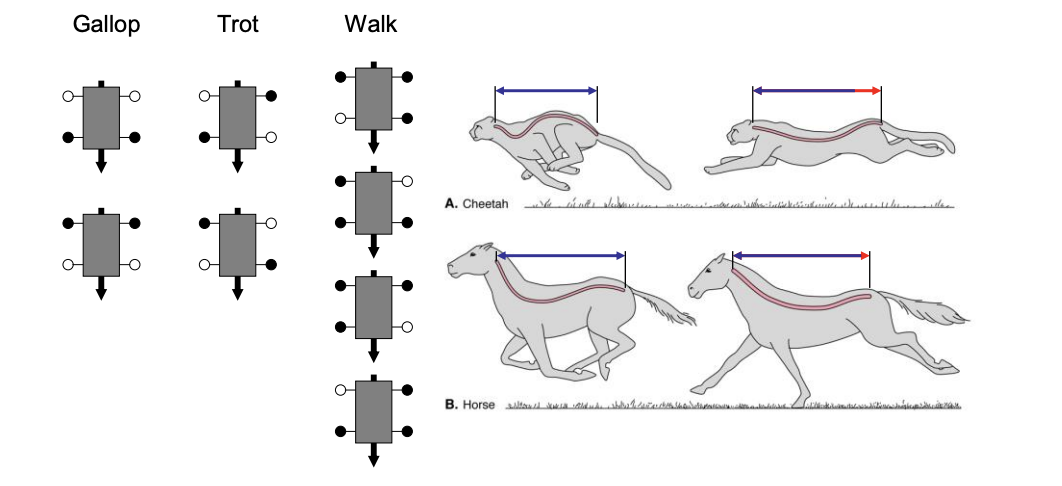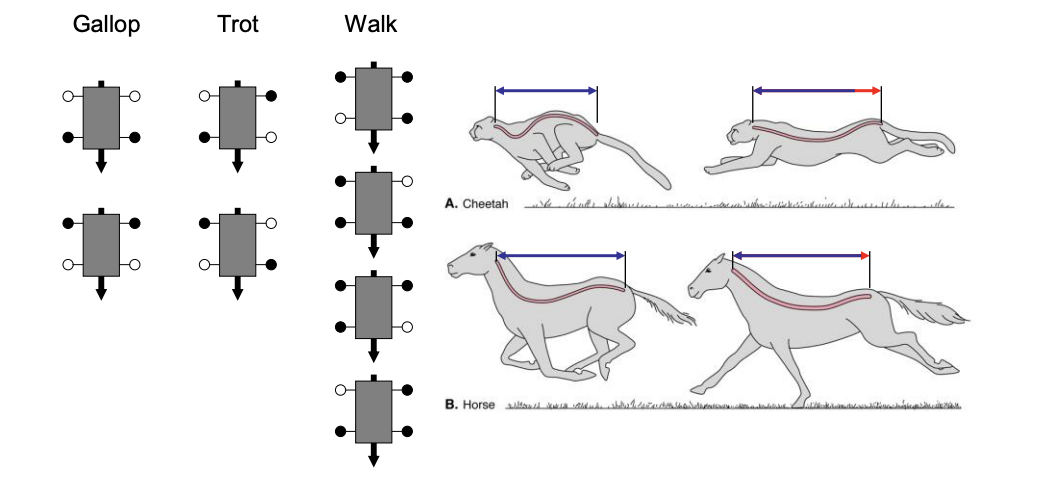Locomotion- Walking and Running LECTURE 6
1/23
There's no tags or description
Looks like no tags are added yet.
Name | Mastery | Learn | Test | Matching | Spaced |
|---|
No study sessions yet.
24 Terms
Features of walking
No aerial phase
1 or 2 feet on the ground
slow
Features of Running
Aerial phase
0 to 1 foot on the ground
Fast
IN both→ the energy
Move up and down
accelerates and decesrates
→ Kinetic and potential energy oscillate in a regular way
Potential vs Kinetic energy in walking
Out of phase
Kinetic highest when Potential is the lowest
→ Model: inverted pendulum
Potential vs Kinetic energy in running
In phase
Kinetic highest when potential the highest
.eg the highest when in the air
→ Not like the pendulum
decelerates at the lowest postion→ all energy into the ground
→ how get this back?→ Elastic energy stores it:
Model: bouncing ball
elastic energy is re-coverted to kinetic energy
Walking speed limit
Only feasible whilse body weight> centripetal force
mg> m v²/l
Around 3m/s

How to racewalkers achieve higher walking speeds?
sticking the pelvis out
increasing he radius of the arc l
→ higher speeds are possible
Types of gaits in quadrupeds
Walking
Running
Gallop→ 2 forlimbs move in phase, followed by two hind limbs

Advantage of using a gallop?
Larger stride lengths
How do cheetahs increase their stride length even more?
Elastic flexion and extension of the spinal column
Also have two areial phases

Why can’t horses do this?
Must have a stiff back
needed for backbone support
At what speeds do animals change gaits?
Upper limit of walking speed can be generalised to predict running speeds at which animals change gait
Re-written as v²/gl< 1→ Froude Number (Fr)
Twice the ratio of kinetic to potential energy!
How do gaits differ?
in the type of exchange between kinetic and potential energy
9 e.g walking is pendulum but running is a spring)
What does it mean for two movements to have the same Froude number
Dynamically similar
e.g a small and large pendulum winging through the same angle
Different sized animals can change gaits at the same Froude numbers
e.g walk-trot transition at Fr=0.5
trop-gallop transtion at Fr= 2.5